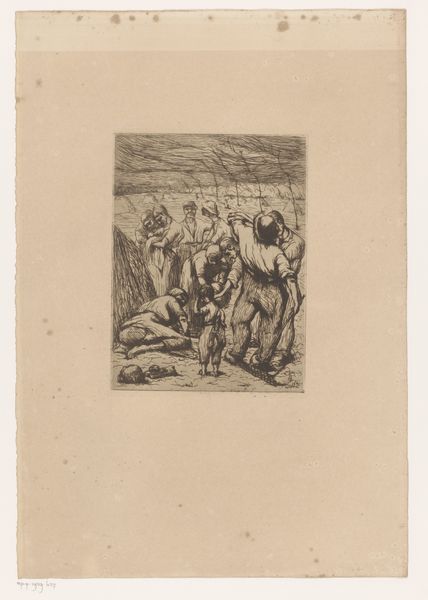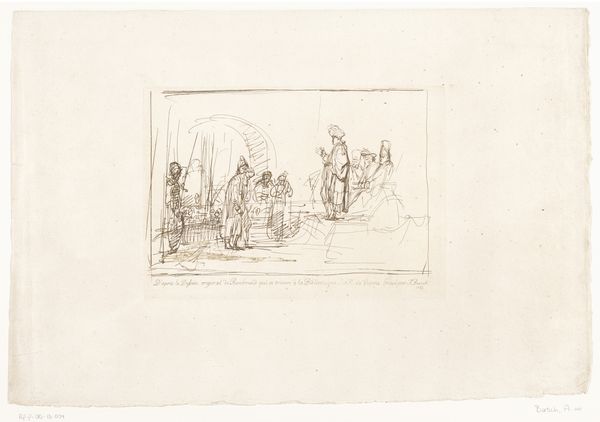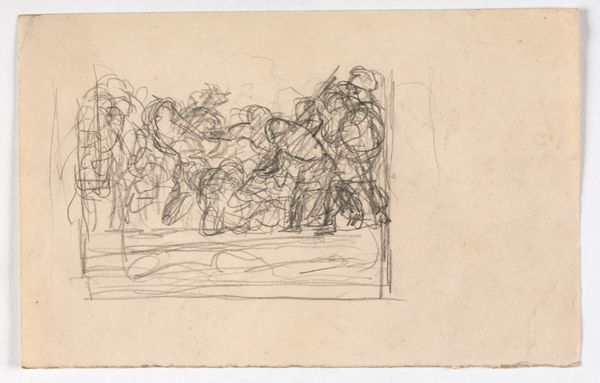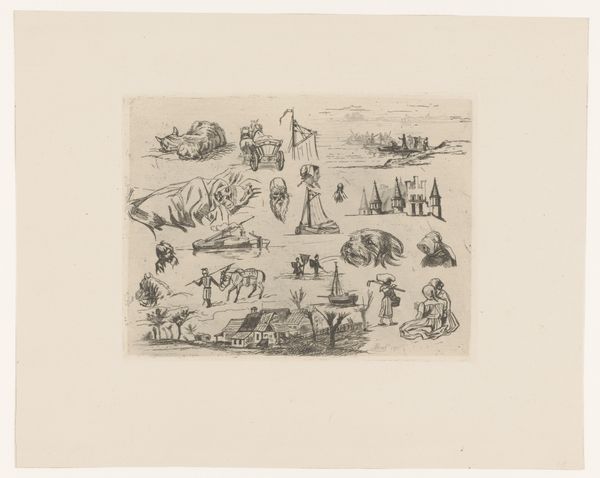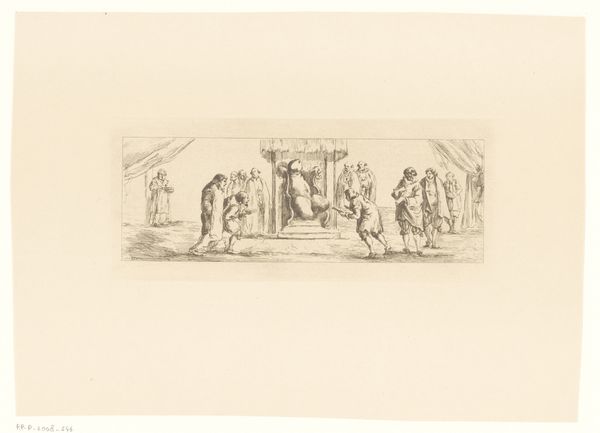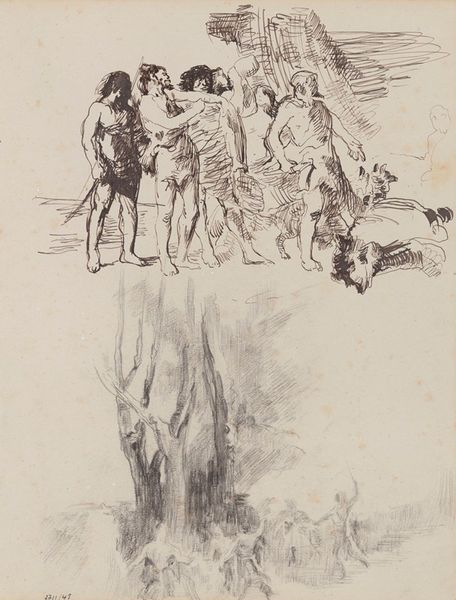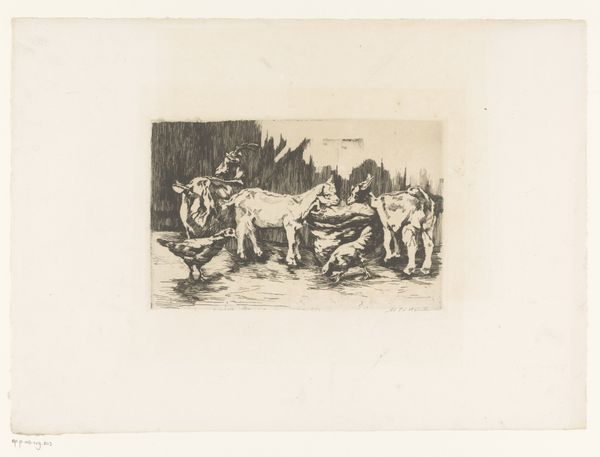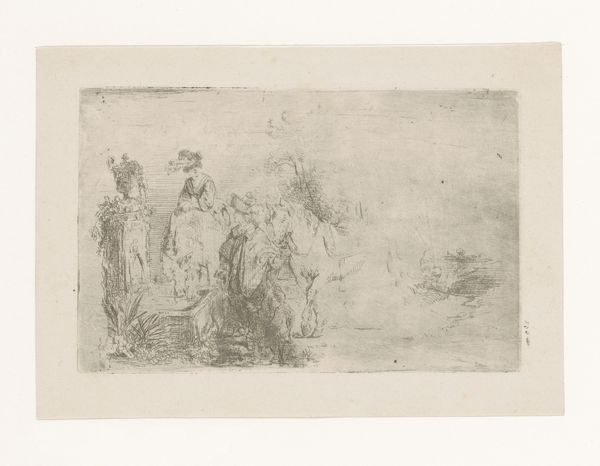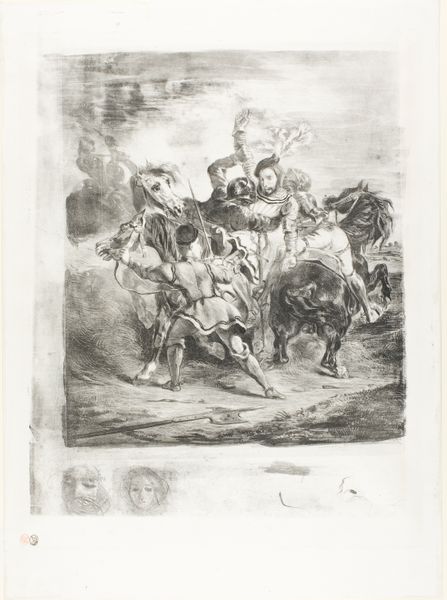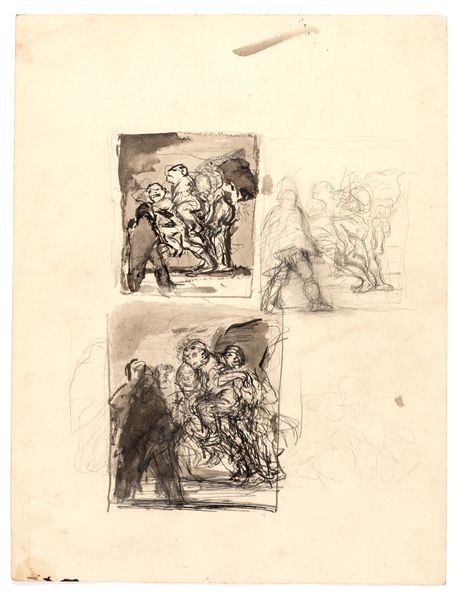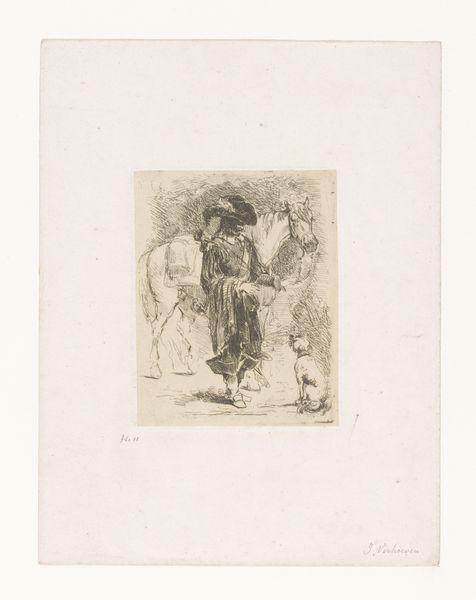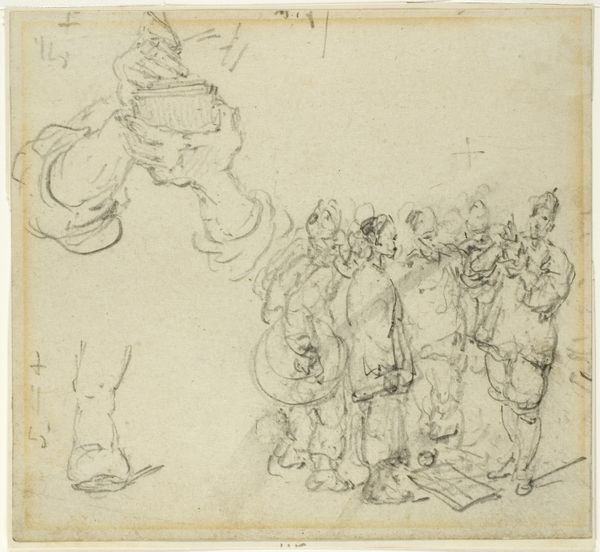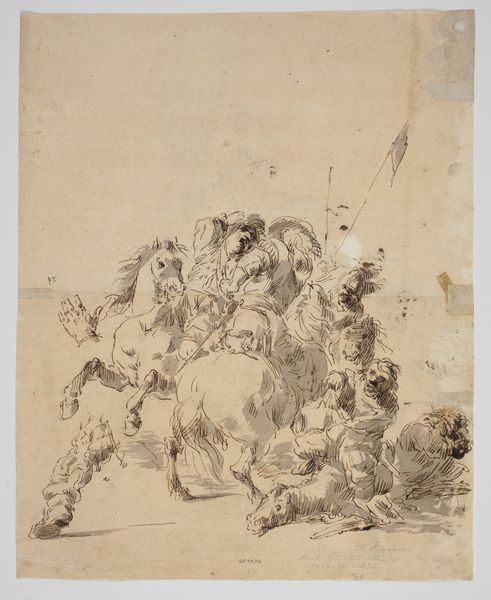
print, etching, intaglio
# print
#
impressionism
#
etching
#
intaglio
#
landscape
#
figuration
Copyright: National Gallery of Art: CC0 1.0
Curator: Auguste Rodin’s etching, "La Ronde," from around 1883, presents a scene filled with figures in motion against a sketched landscape. Editor: My immediate impression is one of both chaos and deep antiquity. It feels like an archaeological fragment. A ritual scene unearthed. Curator: Considering Rodin's background as a sculptor, his venture into intaglio, particularly this print, highlights his fascination with the line. The stark medium emphasizes form through labor-intensive techniques. It's industrial art reflecting social life. Editor: Absolutely. The central motif of dancing figures evokes classical bacchanals, doesn’t it? These gatherings often symbolize unrestrained celebration but also underlying darker forces. The "ronde" suggests a continuous cycle, perhaps a comment on social rituals? Curator: Indeed, and observe the composition. Figures group tightly at left, mirroring the smaller grouping at the far right and thereby confining the central frenzy, suggestive of a community watching, participating, and enabling this revelry, reflecting Rodin’s critique of bourgeois life. Editor: Looking at these frenzied, whirling bodies, the composition certainly invokes the ancient symbolism of dance—the fleeting nature of pleasure, the ritualistic pursuit of catharsis, and perhaps the intoxicating, destructive nature of unchecked desires. It is an unsettling mirror reflecting the viewer’s gaze back onto their own society. Curator: That reading adds to my thought that his method using industrial processes brought forth something profoundly challenging. He uses repetition of actions implied across this landscape to emphasize society’s performative artifice in a period defined by industry. Editor: And isn’t the almost ghostly quality enhanced by the etching technique itself? A fleeting, dream-like apparition captured through ink on paper, perfectly mirroring the transient nature of these embodied expressions. Curator: His approach, using industry against its societal conventions, resulted in work rich in possibilities beyond Rodin’s era. Editor: It allows us, in a glance, a lasting impression of dance as timeless expression. A haunting view.
Comments
No comments
Be the first to comment and join the conversation on the ultimate creative platform.

